This post is a continuation of Subaru Impreza GDB which I kept in the shock absorber replacement the other day.
A shock absorber for unpaved road competition sit on.On rough roads on public roads, the movement of the STi-model powerful coil springs has been sufficiently attenuated, greatly improving the ride.
MY2004 GH-GDB (Applied E) EJ20 Turbo 6MT Mileage 103,000km
However, during long-distance driving, passengers riding in the back seat felt a strong sense of discomfort in the ride, and there was a consultation about whether there was an element that could be improved.
In the past, after replacing the GDB (Applied model B) shock absorber, it was certainly more comfortable to ride, but the swing of the rear did not fit completely.
Is it due to the STi model’s rear spring being a multi-spring rate (two-stage spring constant) with an unequal pitch (line-to-line) ?I felt.
It is the rear spring for the impreza WRX wagon (SS shift) GGA (Applied model E) of the same year that the conformity confirmation was carefully advanced and prepared.The reason for the selection is that the line spacing is relatively evenly spaced, and the back axis weight difference of the various dimensions is 10 kg, which is the smallest of all models.
Both are rough-wound cone coil springs, but for GDB, you can see that the lower 2.5 volume is narrow between the wires.
The measured values are as follows
| Free-duration | Small outer diameter | Large outer diameter | Wire diameter | Turns | |
|---|---|---|---|---|---|
| GDB-E | 306 mm | 126 mm | 156 mm | 13.2 mm | 6-1/4 |
| GGA-E (SS-Shift) | 306 mm | 126 mm | 156 mm | 12.7 mm | 5 |
If you look at the rusty traces seen in the narrow part between the spring lines of the GDB, there might have been many scenes that adhered between the lines at the time of running.There is a stroke position where the effective number of turns becomes 3-3/4 in close contact with perfectly, and the spring rate changes extremely.
Every time the rear suspension passed through that point, there may have been discomfort in the ride.
It's a little off the story, but when it comes to coil springs, there are indicators that are generally conscious, as much as "spring rate (spring constant)".
The unit of the spring rate is N/mm, which represents the force required to compress 1 mm, and I think that it is safe to recognize that "hard spring when the rate is high".
However, if you have experience of changing springs and tried various things, you may know that the spring rate is high, but it is unexpectedly soft ride comfort, and on the contrary, even though the rate is low, you may feel that the ride is not good.
It is a little rough, but the number of turns is small even in the spring of the same rate, and the one with the long eruding of the number of turns and the long length of the free length accumulates energy from the outside efficiently than the one with a short free length (I learned the position energy of the spring in the physics of the high school).If you pay attention to the twisting of one section of the spring line, the latter is an image that is distributed with less burden.Of course, I think that it depends on the preload at the time of spring assembly and the speed at which the spring is compressed.
Energy that could not be stored will be transmitted to the body and tires, and the result of the ride is bad as a burden will appear.
Based on this, looking at the springs of GDB, I think that it became unpleasant because of the decrease in the number of effective turns, which is in close contact between lines in the process of shrinkstroke, and the energy savings rate decreases due to a decrease in the number of effective turns, and a sudden change in rates (increases).
As long as the spring shrinks efficiently (if you store energy), when you return to its original shape, the energy stored is converted into heat by the attenuation of the shock absorber, and the suspension settles down without any extra shaking.Because the spring does not work well, even if the damping force is raised, it becomes resistance and the ride comfort deteriorates.The damping power of the shock absorber cannot substitute for energy savings.
It is important to share the suspension well with each function.
I don't know why the manufacturer set this setting on the STi grade.However, the rear spring of the WRX wagon is very mild and feels good.The impression of the sharp feeling fades, but it was not a weak one that could be crushed by a mighty engine power.
The height change due to the spring change is about +5mm.It is a prediction that the familiar with the upper mount comes out and becomes about +3mm.Since the stabilizer has not changed, we will consult with the owner about the roll balance etc. of the front and rear axes in the future.
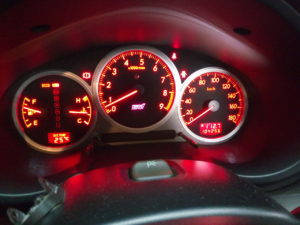
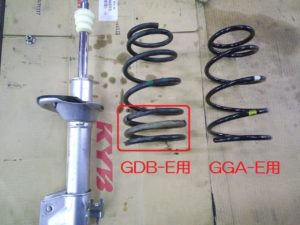
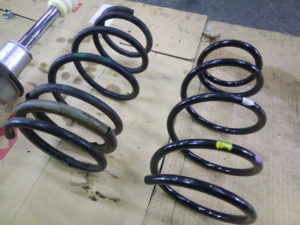
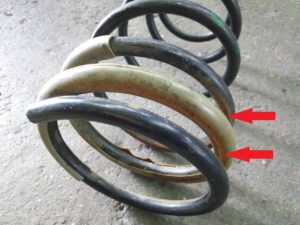
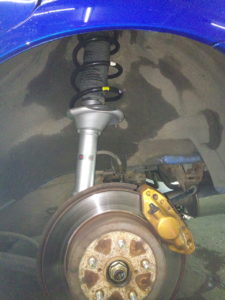
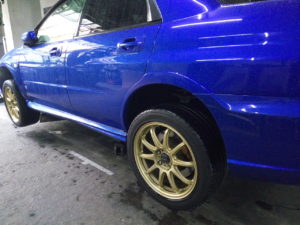
Leave a Reply